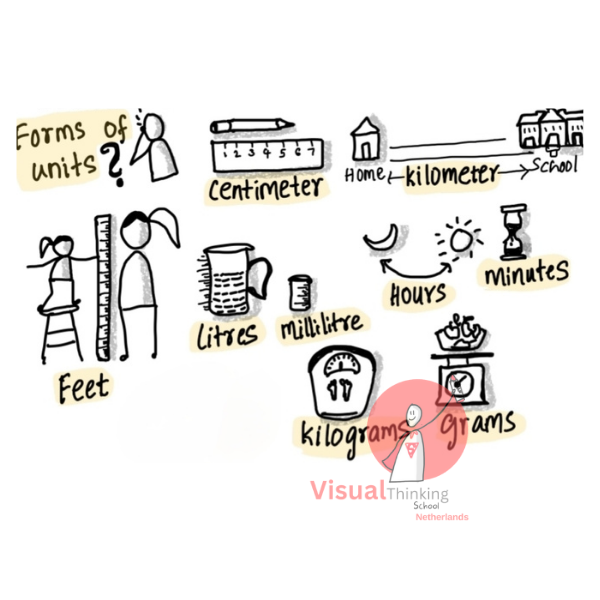

In the vast landscape of knowledge, measurement serves as the fundamental thread weaving precision and understanding into the fabric of our world. From the simplest aspects of daily life to the complexities of scientific exploration, the concept of measurement resonates universally. In this exploration, we delve into the diverse facets of measurement, unraveling its key concepts and applications.
Measurement: The quantification of attributes, dimensions, or quantities. Understanding measurement involves grasping key concepts that form the bedrock of this essential skill. As we embark on this journey, let’s explore the triad of form, function, and change that defines the realm of measurement.

Measurement begins with the identification of units. These units come in various forms, each tailored to quantify specific attributes. Whether we’re measuring length, time, or weight, the form of the unit dictates the precision and applicability of our measurements.
The function of measurement lies in the tools and methodologies we employ to quantify. It’s the process of assigning numerical values to the attributes we wish to gauge. From the simplicity of measuring a recipe’s ingredients to the intricacies of scientific research, the function of measurement adapts to the context.
Change is inherent in the dynamic nature of measurement. Converting units allows us to navigate seamlessly between different forms of measurement. Whether we’re translating distance from centimeters to kilometers or transforming time from minutes to hours, mastering the art of change ensures precision in our understanding.

Measurement is a versatile tool, applied across a spectrum of dimensions in our lives. Let’s explore what we measure and the significance of each parameter.
Length – Measuring length is one of the most fundamental applications of measurement. From the breadth of a room to the height of a towering tree, units like centimeters, meters, and kilometers enable us to quantify the spatial dimensions of our surroundings.
Age – Age, a measure of the time elapsed since birth, is another dimension that measurement encapsulates. Whether we’re celebrating milestones or tracking development, the measurement of age provides a chronological framework for our lives.
Time – Time, the ever-flowing river of existence, is measured in minutes, hours, days, and beyond. From punctuality in daily routines to the precision required in scientific experiments, the measurement of time governs the rhythm of our lives.
Temperature – The measurement of temperature extends our understanding of the thermal aspects of our environment. From the comfort of our living spaces to the intricacies of climate science, units like Celsius and Fahrenheit quantify the degree of warmth or coldness.
Distance – Distance, a crucial metric in navigation and exploration, is measured in units like kilometers, miles, or even light-years. Whether we’re planning a road trip or mapping the vastness of celestial bodies, the measurement of distance facilitates our spatial comprehension.
Money – In the realm of economics and daily transactions, the value of money is paramount. Currency units, whether dollars, euros, or yen, quantify the value of goods and services, shaping the economic landscape.
The art of measuring is amplified by the tools at our disposal. Different attributes require specific instruments to ensure accuracy. Let’s explore the varied measuring tools and the forms of units they employ.

Ruler and Tape Measure: These tools excel in measuring length, providing a tangible and standardized reference for dimensions.
Clock and Stopwatch: Essential for measuring time, these tools are calibrated to precise intervals, ensuring accurate temporal assessments.
Thermometer: Measuring temperature becomes tangible through the use of a thermometer, gauging the thermal energy of a given environment.
Scale: From grams to kilograms, a scale serves as a reliable tool for measuring weight, crucial in fields ranging from culinary arts to scientific research.

Centimeters to Kilometers: In measuring length, the spectrum spans from the minuscule centimeter to the expansive kilometer. It offers flexibility in expressing distances.
Feet: Widely used in imperial systems, feet provide an alternative unit for measuring length. It is used in countries like the United States.
Milliliters to Liters: Fluid measurements are often quantified in milliliters or liters, ensuring precision in recipes and scientific experiments.
Minutes to Hours: Time is in minutes for finer granularity and in hours for broader temporal assessments, accommodating various contexts.
Grams to Kilograms: Weight, a crucial attribute in multiple domains. We use it in grams for precision and in kilograms for larger quantities.

In the intricate dance of existence, measurement emerges as our guiding partner. It allows us to navigate the intricacies of our world with precision and understanding. From the basic units that form its foundation to the diverse parameters it quantifies, measurement stands as a testament to humanity’s quest for clarity and comprehension. As we continue to unravel the mysteries of our universe, the art of measurement remains an indispensable tool. A compass guiding us through the vast expanse of knowledge.
We conduct online and in-person certification trainings on our Trade Marked Training on Business Sketchnotes ™.
We have an open challenge in our trainings : If you can not draw after our 9 hours of trainings, we will close our trainings FOR EVER !! ..and we are still waiting for that one person even after training more than 38000 professionals.
You can also join our whatsapp community to learn from those who have attended our trainings

We trained more than 38000 professional and gave corporate trainings in more than 65+ top notch companies

Check Our Trainings

Maths educator by profession and sketchnoter by passion. She loves teaching maths using sketchnotes. She is also an acredited school sketchnote trainer with Visual Thinking School, Netherlands.
More of her sketchnotes can be checked on her Instagram: @Lavanya_anugula